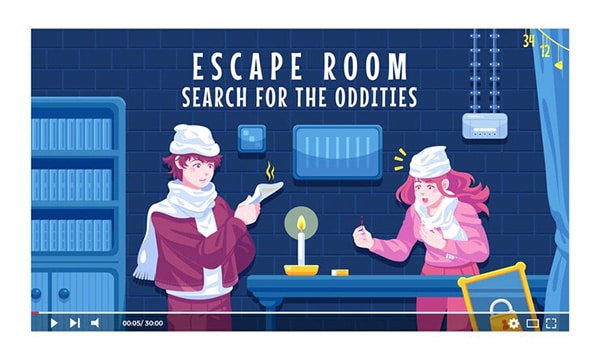Rise to the Challenge: Escape Room Difficulty in Sydney
Hey there, thrill-seekers and puzzle lovers!
Ever found yourself scratching your head at a tricky riddle or yearning for an adventure like Indiana Jones?
Well, the escape rooms in Sydney might just be the answer you’ve been looking for.
Escape rooms are the new rockstars of entertainment, where you’re not just a spectator but part of the show!
With themes that can make you feel like an ancient Egyptian pharaoh or a suave bank robber, escape rooms offer more twists and turns than a kangaroo on a trampoline!
Virtual Reality and its Integration into Escape Rooms
The world of escape rooms has been transformed with the integration of Virtual Reality (VR). No longer are we just fumbling with locks and clues in a physical space; now, with the magic of VR, the landscapes, challenges, and experiences have broadened beyond our wildest dreams.
From diving in the Great Barrier Reef while solving a mystery to journeying through the rugged Outback to uncover hidden treasures, the immersive nature of VR transports us Aussies to settings that were once thought impossible for an escape room.
This combination of tech and tactile puzzles makes for a bonza experience, truly levelling up the traditional concept and giving us a ripper of time.
So next time you’re keen on an adventure, chuck on that VR headset and step into an escape room like never before!
Here’s the kicker: VR escape rooms are adding a whole new layer of excitement to the mix.
Picture this: You’re robbing a bank, and the alarms go off, but it’s all in a controlled virtual environment.
Pretty neat, huh?
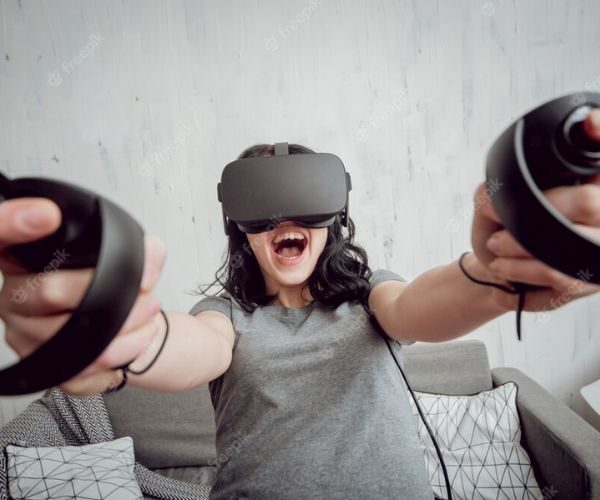
Escape Room Difficulty Levels
Ready to rise to the challenge? Let’s break down what escape rooms have in store for you.
Beginner’s Guide to Escape Room Games
The end goal is often to “escape” from the location of the game in a specified amount of time. Right?
But how difficult can the games be?
Here’s a detailed breakdown of the Beginner difficulty level in escape rooms.
1. Objective Clarity
- Clear Goals: Beginner rooms generally have a very straightforward objective, such as finding a key or unlocking a door.
- Linear Puzzles: The progression is often linear, meaning you solve one puzzle, which leads directly to the next, and so forth. There are fewer red herrings (misleading clues) and fewer distractions.
Discover different types of escape rooms.
2. Puzzle Complexity
- Simplicity: The puzzles in a beginner room are designed to be solved with less effort compared to those in more advanced rooms. The solutions are usually more intuitive.
- Limited Puzzle Types: These rooms might rely on basic puzzle types such as jigsaw puzzles, basic cyphers, pattern recognition, and straightforward lock-and-key mechanisms.
3. Room Design
- Intuitive Design: The room layout and design are typically more straightforward. There are fewer hidden compartments, and essential items are more easily accessible.
- Thematic Simplicity: While the theme can be fun and engaging, it often doesn’t play a critical role in puzzle-solving.
4. Audience
- Ideal for First-Timers: These rooms are catered toward those who are new to escape rooms or those who want a more casual experience.
They’re great for families with younger kids or for people who just want to have a fun, less challenging time.
5. Safety and Comfort
- Less Intimidating Atmosphere: The ambiance is usually less intense. For example, themes related to horror or extreme suspense might be avoided at this level to ensure comfort for all participants.
6. Feedback and Learning
- Opportunity for Feedback: Since it’s aimed at beginners, there might be more opportunities for feedback after the game, helping participants understand where they excelled and where they could improve.
The beginner difficulty level in escape rooms is designed to offer fun learning and ensure that participants feel accomplished by the end of the game.
As players gain more experience and confidence, they can then progress to more challenging difficulty levels.
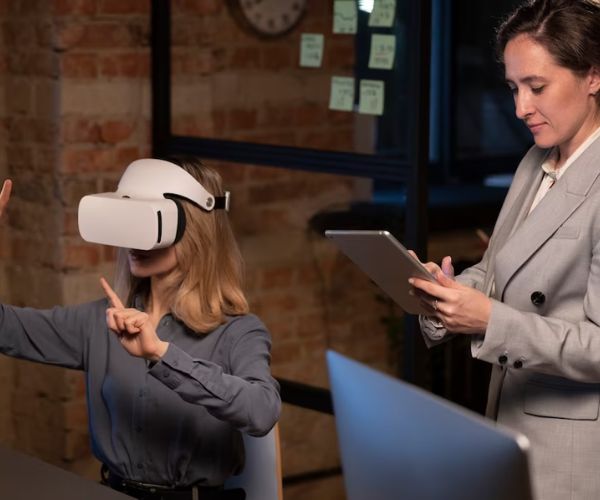
Intermediate Challenges and Problem Solving
The Intermediate difficulty level in escape rooms offers a balanced challenge for participants who have some experience with escape rooms or are looking for a bit more of a challenge than what the beginner level provides.
This level takes the foundational concepts of escape room gameplay and adds layers of complexity, fostering teamwork, critical thinking, and creativity.
Here’s a detailed breakdown of the intermediate difficulty level in escape rooms.
1. Objective
- Layered Goals: While the primary objective remains to escape or achieve a particular goal, there might be sub-objectives or side missions introduced to increase complexity.
- Semi-Linear Puzzles: While some puzzles lead directly to others, there might be multiple puzzles accessible and solvable at the same time. This requires teams to decide on a strategy regarding which puzzles to tackle first.
2. Puzzle Complexity
- Variety: A greater variety of puzzle types might be introduced, ranging from logic puzzles and riddles to physical challenges.
- Multistep Solutions: Some puzzles might require multiple steps or components to solve, needing players to combine various items or clues.
3. Room Design
- Thematic Depth: The theme plays a more significant role. Puzzles might be deeply intertwined with the story, requiring players to immerse themselves more to solve them.
- Hidden Elements: There may be secret compartments, hidden clues, or items that require a keen observation to locate.
4. Audience
- Broad Appeal: Suitable for those who have played a few escape rooms or those who naturally enjoy puzzles and challenges. It’s also ideal for groups with a mix of experienced and new players.
5. Safety and Comfort
- Moderate Intensity Themes: While horror or suspense might be introduced, it’s usually balanced to ensure it doesn’t overly intimidate or unsettle participants.
- Always Safe: Like all escape rooms, there are always clear exit mechanisms in place for emergencies.
6. Teamwork and Collaboration
- Varied Skill Utilization: The puzzles in intermediate rooms often require a mix of different skills, from logical deduction to physical dexterity. This ensures that various team members can shine at different moments.
- Encouraged Collaboration: Many puzzles might require collaboration or multiple players working in tandem to solve.
7. Feedback and Learning
- Post-Game Analysis: While feedback is still provided, it might be more about strategy, teamwork, and the nuances of puzzle-solving rather than basic principles.
The intermediate difficulty level in escape rooms bridges the gap between the foundational elements of beginner rooms and the high complexity of advanced rooms.
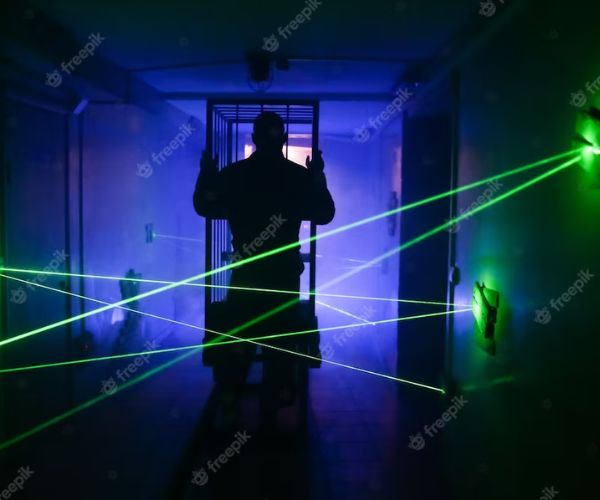
Expert Escape Rooms: The Ultimate Test
The expert difficulty level in escape rooms is designed for seasoned players who are looking for challenging and immersive experiences.
These rooms often have intricate puzzles and deeper narratives and require a high level of teamwork and critical thinking.
They are tailored to provide a complex challenge, even for those who have faced multiple escape rooms in the past.
Here’s a detailed breakdown of the expert difficulty level in escape rooms.
1. Objective Complexity
- Multifaceted Goals: The main objective might be multi-layered, with several sub-tasks or side missions that players must complete before achieving the primary goal.
- Non-Linear Puzzles: Multiple puzzles can be tackled simultaneously, requiring teams to split tasks and determine priorities efficiently.
2. Puzzle Complexity
- Intricate Designs: Puzzles often have several layers or steps, demanding keen observation, logic, and sometimes out-of-the-box thinking.
- Interconnected Solutions: The solution to one puzzle might be intertwined with others, necessitating that players remember or revisit previously encountered clues or items.
3. Room Design
- Deep Narratives: The theme and story are integral to the escape room experience. Background stories might be complex, with rich lore that aids in puzzle-solving.
- Advanced Tech Integration: Expert rooms often incorporate sophisticated technology or mechanics, such as magnetic locks, sensors, or augmented reality components.
- Multiple Sections or Chambers: Instead of one main space, there might be several rooms or sections to explore and unlock sequentially.
4. Audience
- For Enthusiasts: Targeted at escape room enthusiasts or those who enjoy intense problem-solving and immersive experiences.
5. Safety and Comfort
- High-Intensity Themes: Themes can be more intense, often delving into horror, suspense, or psychological challenges. However, safety remains paramount, and emergency exits are always present.
- Physical Challenges: Some rooms might incorporate physical elements, like crawling, lifting, or precise manoeuvring.
6. Teamwork and Collaboration
- Diverse Skill Requirement: The challenges will often cater to a range of skills and talents, making diverse teams advantageous.
- Essential Communication: Given the complexity, efficient communication becomes crucial. Teams must constantly share findings and update each other on progress.
7. Feedback and Learning
- Debriefing Sessions: Post-game analysis can be more in-depth, discussing strategies, missed clues, and exploring the narrative’s finer details.
The expert difficulty level in escape rooms offers a challenging and deeply engaging experience.
These rooms test players’ cognitive abilities, teamwork, and adaptability.
For many enthusiasts, the thrill of beating an expert room provides a sense of accomplishment and a testament to their problem-solving prowess.
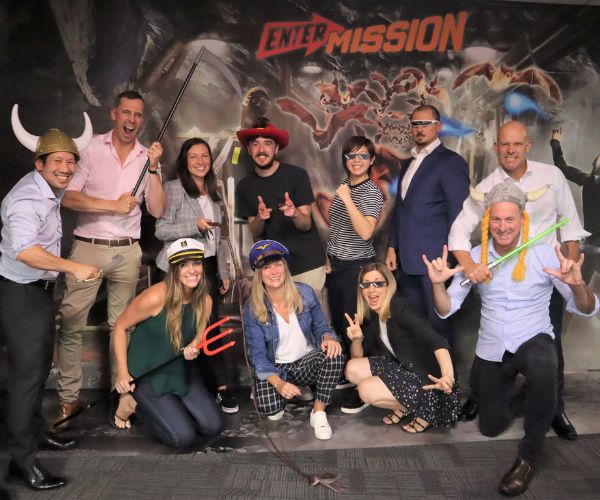
Entermission Virtual Reality Escape Rooms in Sydney
Entermission Sydney is the pinnacle of escape room adventures in Sydney‘s core. We merge classic escape room challenges with advanced virtual reality tech, creating a deeply immersive and engaging setting that plunges players right into the game’s epicentre.
It’s not just about the visuals; our VR escape rooms test the intellect, pushing players to harness their analytical and problem-solving prowess to find an exit.
Enhanced with authentic special effects and exclusive rooms, we guarantee an unmatched escapade, perfect for birthdays, team events, and memorable gatherings.
Experience more than just a game at Entermission Sydney. Dive into the story.
Folks, the game’s afoot, and the doors are waiting to be unlocked.
So whether you’re planning a birthday bash or just want to test your wits, Sydney’s escape rooms are calling your name!
Ready to take the plunge?
Book your adventure now, and let the games begin!
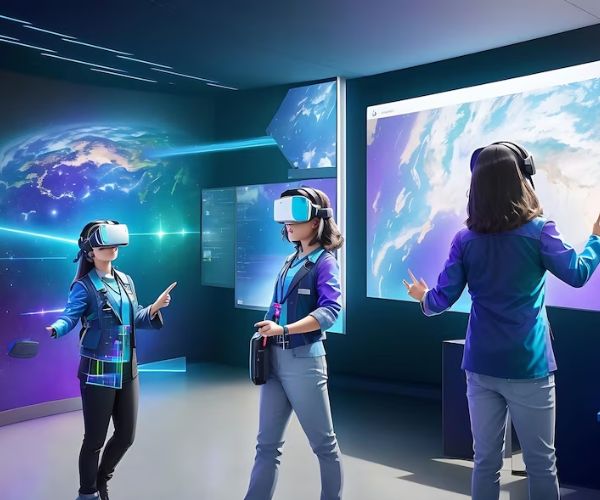
Frequently Asked Questions
1. Can I buy gift vouchers for escape room experiences?
Absolutely! Who wouldn’t love the gift of adventure?
2. What are VR Escape Rooms, and how do they work?
VR Escape Rooms are immersive gaming experiences that use virtual reality technology. Players are placed in a virtual environment and must solve puzzles and riddles to “escape” within a set time.
They combine traditional escape room challenges with VR’s immersive capabilities, allowing players to feel truly inside the game’s world.



